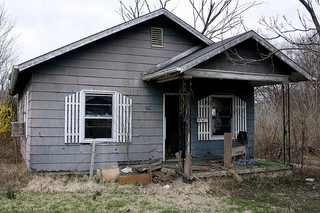I
The Data Collaborative—Pairing Advocates with Analysts
The Data Collaborative is a Philadelphia-based collaborative composed of housing and community development related nonprofit intermediaries and advocates (the Housing Alliance of Pennsylvania, Philadelphia Association of Community Development Corporations, LISC Philadelphia, and Regional Housing Legal Services) and a research partner, The Reinvestment Fund. The group was formed in 2011 with funding from the William Penn Foundation.
The goals of the Data Collaborative were two-fold: 1) evaluate the effectiveness of existing programs and policies; 2) inform future policy and program recommendations.
An early report from the Data Collaborative was instrumental in demonstrating the financial impact that the Homeowners’ Emergency Mortgage Assistance Program (a long-running bridge loan program for homeowners facing foreclosure through no fault of their own) had had in the state. The data and related advocacy helped to get the program refunded, reviving a vital homeownership preservation tool.
Drilling Down on Blight Remediation
While the research on emergency mortgage assistance program demonstrated the value of a long-running, award-winning program, the Data Collaborative also wanted to look at the impact of newly enacted legislation. Members of the Data Collaborative had been actively involved in advocating for new statewide blight legislation and leaders in Philadelphia were using the new tools in a data-driven targeted way, creating the opportunity to study the impact of the new anti-blight tools.
Enacted in 2010, the Neighborhood Blight Reclamation & Revitalization Act allowed a lien to be placed against the personal assets of an owner of a blighted real property in certain cases, denial of permits, extradition of out-of-state landlords and the establishment of blight courts. These tools were expected to catch the attention of absentee owners in a way that placing a lien on an abandoned, vacant property didn’t.
Philadelphia’s Department of Licenses and Inspections launched an aggressive enforcement effort using the act and a local “windows and doors” ordinance (which allows the city to fine owners $300 per day per missing window or door on blocks that are at least 80 percent occupied). The department used two main strategies: 1) targeted blocks with some blighting vacant properties, but with a significant number of occupied properties; and 2) targeting owners of a large number of blighted properties. The theory was that targeted blight enforcement action would help stabilize neighborhoods that might otherwise start to decline.
The Results
For comparison purposes, The Reinvestment Fund paired each targeted area with three similar areas in the City. The fund found that about 40 percent of the targeted areas did better than all three of their comparable neighborhoods in terms of change in sales price and change in tax delinquency; 80 percent of the targeted areas out performed at least one of the comparable neighborhoods.
Overall, the targeted areas had an average increase in home sale price of 31 percent (compared with an average increase in sale price of only 1 percent in the comparable areas)! The targeted areas had a slight decrease in tax delinquency during the same period, but tax delinquency in the comparable areas increased. The Reinvestment Fund estimated that the enforcement action helped to increase surrounding property sales prices by as much as $74 million, which translated into more than $2 million more in transfer tax revenue for the city.
Next Steps
Philadelphia had reiterated its commitment to the targeted blight-remediation program, although recent newspaper reports have indicated that in the months prior to the issuance of the report there may have been some slowdown in activity. In addition, representatives from The Reinvestment Fund told city officials that smaller municipalities have been able to use proactive code enforcement to generate enough fees from fines to support larger inspections departments than the one in Philadelphia. We expect that the information about the effectiveness of the program and the potential to make the effort self-sustaining will inform future implementation.
The executive summary of the report is available now; the full report will be available by the end of March. If you’d like a copy of the full report email [email protected].





In Memphis, we too have been trying to measure the effects of blight remediation. It’s pretty easy to find data on the cost of blight; the inverse is not so easy. The outcomes are not just financial — they affect quality of life on many fronts. But, it is critical that we better measure and tell the story to governments and foundations of the financial benefits — tax base, police, fire, new infrastructure in the suburbs that is averted, etc. — in order to convince them to fund our work. Blight remediation is a sound investment.
Steve Lockwood
Frayser CDC
Memphis, TN
Interesting report! It’s a happy coinciedence that is was paired with the post about the milleinials in the mid-size cities.